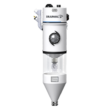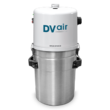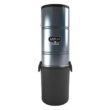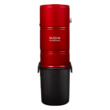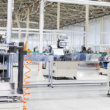We all know that the dust in our homes poses a risk to people who suffer from asthma or allergies and that it contributes to the spread of diseases. However, a lot of people ignore the dangers of dust in an industrial environment. It can cause serious diseases or workplace incidents.
Workers who are exposed to dust at their workplace are subject to numerous diseases if they are not properly protected.
Dust is classified in two groups: organic (mouldy hay, droppings, compose dust) and inorganic (coal, asbestos, beryllium). The human body has multiple defence mechanisms to prevent them from reaching the lungs. However some particles can still make their way into these respiratory organs.
Over time, it can cause fibrosis, which means lesions inside the lungs. The organ will develop scar tissue that will reduce it elasticity, thus it’s capacity to absorb air. Other particles without causing fibrosis can travel in the body and attack organs or the brain.
The most common diseases that are caused by dust are asbestosis, beryllium disease, silicosis or farmer’s lung.
Dust can also represent a risk of explosion when necessary precautions are not taken. A high concentration of fine metal dusts can cause a deflagration. Some dust can react with water and form hydrogen, a highly explosive gas.
The course of action that produces metal dust are particularly at risk from explosions, such as polishing or brushing metal materials or dust collection.
How to Prevent Risks Associated with Dust?
Multiple solutions exist to protect workers from the risks associated with dust. We can think of personal protection equipment such as masks, proper storage, toxic waste disposal and the use of vacuum cleaners instead of brooms to maintain cleanliness.
Regarding explosion preventions, it is important to collect the dust at the source. Then, it must be carried out safely and efficiently by non-combustible ducts. A central vacuum system following NFPA standards is the best solution.
Dust in an industrial environment is a real danger for the worker’s long-term health and for explosion risk. However, there are multiple ways to prevent accidents by treating them in a safe and effective way!









